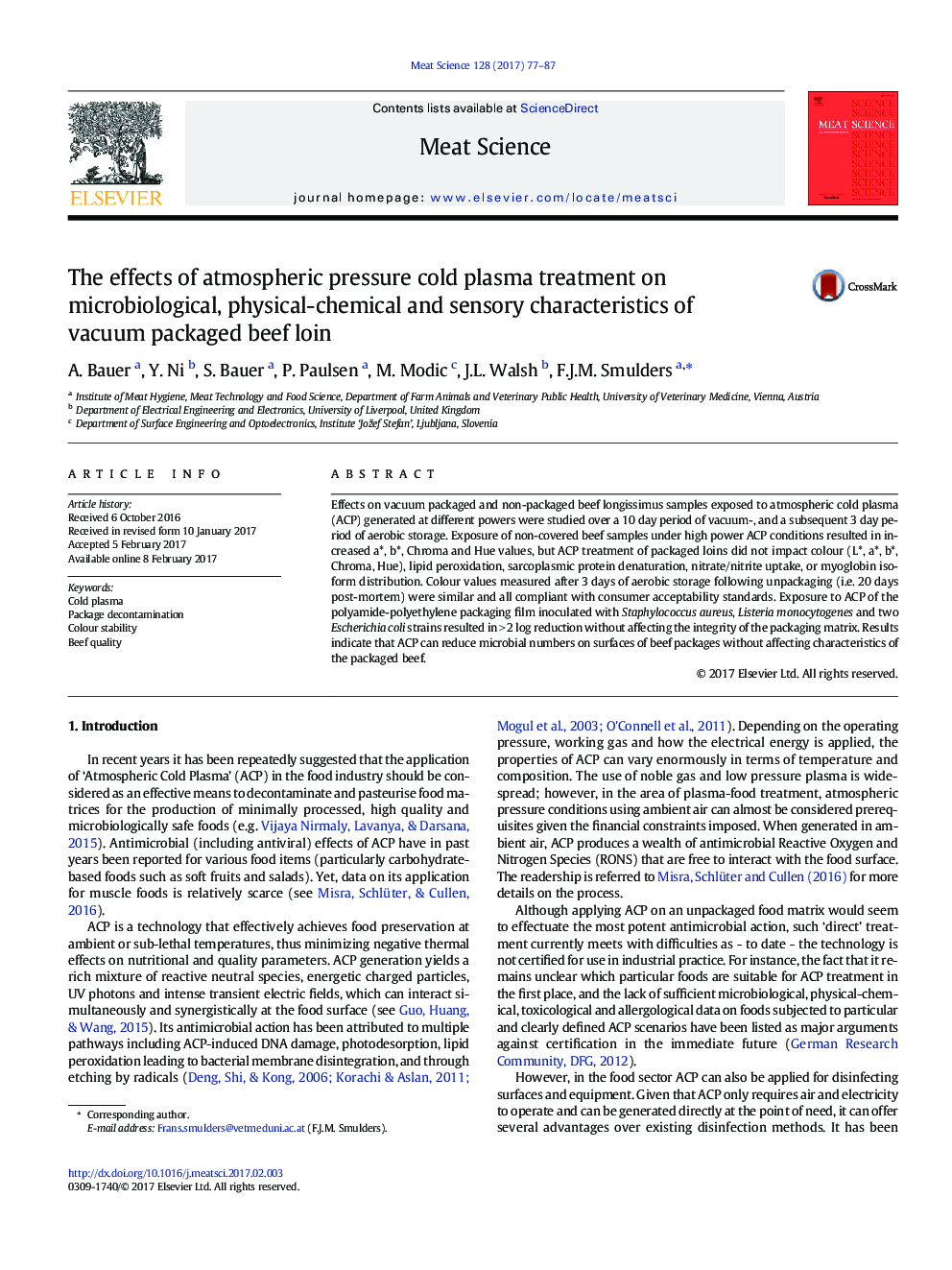| Article ID | Journal | Published Year | Pages | File Type |
|---|---|---|---|---|
| 5543433 | Meat Science | 2017 | 11 Pages |
â¢Atmospheric pressure cold plasma treatment reduced numbers of contaminant bacteria on vacuum packaging film > 2 log units.â¢The integrity of the packaging matrix was not affected.â¢No immediate effects on colour, Mb isoform distribution and degree of oxidation in vacuum packaged beef loins.â¢No delayed effects were observed over 10 days vacuum- and 3 days aerobic storage.â¢Cold plasma technology has the potential to sanitize surfaces in the meat packaging area.
Effects on vacuum packaged and non-packaged beef longissimus samples exposed to atmospheric cold plasma (ACP) generated at different powers were studied over a 10Â day period of vacuum-, and a subsequent 3Â day period of aerobic storage. Exposure of non-covered beef samples under high power ACP conditions resulted in increased a*, b*, Chroma and Hue values, but ACP treatment of packaged loins did not impact colour (L*, a*, b*, Chroma, Hue), lipid peroxidation, sarcoplasmic protein denaturation, nitrate/nitrite uptake, or myoglobin isoform distribution. Colour values measured after 3Â days of aerobic storage following unpackaging (i.e. 20Â days post-mortem) were similar and all compliant with consumer acceptability standards. Exposure to ACP of the polyamide-polyethylene packaging film inoculated with Staphylococcus aureus, Listeria monocytogenes and two Escherichia coli strains resulted in >Â 2 log reduction without affecting the integrity of the packaging matrix. Results indicate that ACP can reduce microbial numbers on surfaces of beef packages without affecting characteristics of the packaged beef.
